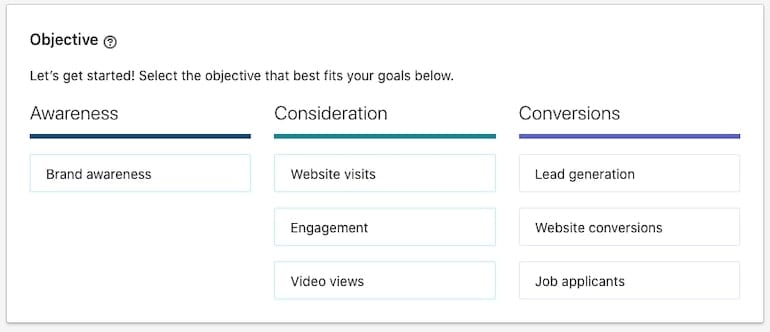MARKETING
New LinkedIn Ads Features Every B2B Advertiser Should Know

LinkedIn Ads platform has significantly evolved since its launch back in 2005. Fifteen years later it is still a pillar in paid social advertising especially for advertisers who would like to leverage it for creating and nurturing B2B relationships. With 310 million MAU (Monthly Active Users) it provides a unique opportunity to reach out to audiences based on their job title, industry, company size and name, seniority, and more. This has given LinkedIn Ads a very unique value proposition that makes it a marketer’s first choice when it comes to influencing business decision-makers.
In terms of platform features though, LinkedIn always has looked at Facebook Ads as a role model. Features such as Objective-based campaigns, Lookalike Audiences and Custom (list-based) Audiences were introduced to Facebook Ads way ahead of LinkedIn Ads and eventually made their way to the platform as users expected LinkedIn to keep up!
This has remained true in the last few releases of features to LinkedIn Ads. A bundle of improved audience building features, new ad types, and enhanced reporting made many avid users of the platform really happy about in the last few months. In this post, we’re going to take a look at some of these features and explore ideas and use cases.
Engagement Retargeting
I clearly remember how excited I got when I heard about the introduction of Video Views objective to the platform about a year ago. My excitement didn’t last long though, there was no way to retarget the engagements with the view based on the watch time/percentage and this meant running these campaigns only would make sense if we wanted to influence brand awareness. Yes, it was listed under the “consideration” column but what should we do after someone watches the video? There was no way to target those engagements. Well, that’s not the case anymore!

With the most recent changes to the Matched Audiences, we are able to create video engagement audiences based on percentage watched. Options are 25%, 50%, 75%, and 97% watch percentages of the videos going back all the way to 365 days. Now we get to plug in those warmed-up valuable engagement audiences in a conversion campaign for one last nudge.
In a similar move, LinkedIn has introduced engagement audiences to Lead Gen forms too. At the moment, it allows advertisers to create audiences based on form opens and form completions, and, similar to video views, there is a maximum lookback window of 365 days. In both cases, the audiences need to populate at least 300 LinkedIn members before they can be used in a campaign.
In addition to targeting these audiences with follow-up messaging, another great idea is creating lookalike audiences from them. For example, an advertiser would make a lookalike audience based on video engagements in a Video View campaign or a lookalike based on Lead Gen Form submissions. This option allows you to target users similar to those that have engaged with your content previously.

Conversation Ads
Similar to Facebook Ads’ Messaging Ads and built on InMail ads, Conversational Ads will help us to engage in an interaction more sophisticated than showing an image or a video ad and hoping to get a click. Instead, we can engage in a conversation, provide some context, and tell a story by sending a personalized series of messages.
This new format is available under Lead Generation and Website Visits campaign objectives and can be combined with features such as conversion tracking or lead gen forms. You get to design a flow for the conversation either from a great selection of templates or from scratch and tie each path to a certain CTA depending on the user responses. This ad type is currently in beta so you may have to wait a little longer for it in case your account is not already part of the beta rollout.

Reporting Enhancements
And last but definitely not least in the list of recent improvements to the LinkedIn Ads platform, we need to talk about all the improvements with the reporting and UI. LinkedIn Ads now reports metrics such as Reach and Avg Frequency so we all have a better sense of ad fatigue and controlling it. They have even allocated a whole new view for delivery level metrics called, wait for it, Delivery View. I’m sure this is going to save many advertisers time and sanity as the only other way to get a feel about Reach and Frequency prior to this was having access to a dedicated LinkedIn rep and hoping for the best.

Even better, we get to have our own Custom Views by mixing and matching a personalized combination of metrics that we find relevant to our analysis and optimization process.

LinkedIn Ads has come a long way with completing its toolbox of campaign objectives, audience building features, ad types, and reporting. I’m pretty sure each LinkedIn Ads advertiser has their own wishlist of other features that the platform is still lacking, things such as placement customization, dynamic ads, multiple ad types in the same campaign, bulk editing tools and on top of it all, a more robust and user-friendly interface. Looking forward to seeing some of these implemented when we update this post!


















